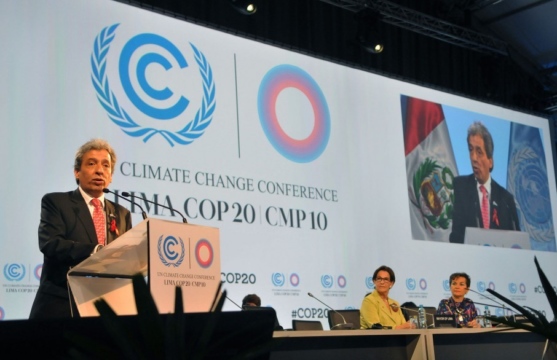Bolivia & the Global Fight Against Climate Change
In the past year, the Bolivian government has emerged as an outspoken critic of climate change policies.
As global temperatures continue to rise with the global community stalled on any way to stop them, countries must prepare to adapt to increasingly volatile environmental conditions, said Juan José Daboub, on March 20 at a discussion held by the Inter-American Dialogue. Daboub is the founder and CEO of the Global Adaptation Institute, an environmental organization that seeks to foster sustainable development by building resilience against climate change.
Daboub argued that, absent a comprehensive, global mitigation agreement, countries must face the realities of a changing climate. The vulnerable developing world particularly needs “practical solutions” to the building pressure of climate change. To stop, or reverse, the warming of the planet will take unprecedented global agreement and cooperation. However, projects to adapt to the changes that rising temperatures will bring, such as water shortages, crop shifts or more frequent tropical storms, can be executed at national and local levels and tailored to the needs of particular communities.
The Global Adaptation Index (GAIN) is a new tool to help countries assess their ability to adapt to climate change. Launched in September 2011, the GAIN summarizes a country's vulnerability to climate change and other global challenges, and reports on its ability to defend itself against the damaging effects. The index is designed to help businesses and public agencies to establish priorities and develop solutions to the global challenges climate change will bring. According to Daboub, the GAIN’s strength is the matrix’s measurement of both vulnerability and readiness, making it a tool that investors can use to decide whether to invest money in a particular country. By demonstrating the benefit of taking immediate action to prepare for climate change, the GAIN can also “incentivize” reluctant politicians and governments to prioritize adaptation projects.
Though Latin American countries do not rank among those least adaptable to climate change, several countries, especially in Central America, are both highly vulnerable to climate change and unprepared to meet its challenges. Chile and Uruguay are two countries that have implemented adaptation policies and are leading Latin America in preparedness for climate change. Daboub illustrated the difference between post-earthquake Chile and Haiti; in Haiti, the quake caused severe destruction to the country’s infrastructure, while damage in Chile was manageable. For Daboub, Chilean investment in projects to increase its readiness reduced the country’s vulnerability to the earthquake and other natural disasters, while lack of targeted infrastructure investment in Haiti left it exposed and vulnerable.
Daboub emphasized that, while governments and multilateral organizations can help countries fund adaptation projects, they “must facilitate” private investment. Public institutions simply do not have the capacity to fund and execute infrastructure and other projects on the timeline and scale needed to transform a country’s readiness for climate change. However, some countries must work to facilitate this private investment. Daboub noted that, in the GAIN rankings, the best prepared countries are also those with less regulated economies. He warned that states with restrictive and closed economic models, particularly Cuba and Venezuela in Latin America, will struggle to adapt to climate change.
In the past year, the Bolivian government has emerged as an outspoken critic of climate change policies.
As the global financial crisis continues to alter US relations with the hemisphere, greater engagement in the region remains critical to US interests.
In December, world leaders will travel to Lima, Peru to participate in United Nations COP 20 talks.
